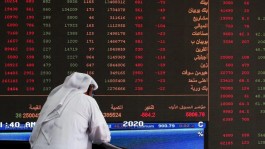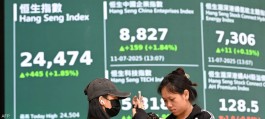Oil prices fell for a second straight session as weak economic prospects for China, the world's largest importer of crude, continued to roil the market.
Brent crude was trading near $74 a barrel, after losing more than 2% on Friday, while West Texas Intermediate crude approached $70.
Data over the weekend showed weak inflation in China in October, while factory-delivery prices fell again. That came after Beijing unveiled a debt swap plan on Friday to support the economy but stopped short of unleashing new stimulus, disappointing investors.
Crude oil traders were assessing the outlook for global demand in 2025, as well as the implications of Donald Trump's election as president and tensions between Israel and Iran.
With a surplus widely expected next year, investors will get a host of influential forecasts this week, starting with OPEC's outlook on Tuesday.
fair value
“The oil market has reached a fair value and is incredibly comfortable at $70,” said Chris Weston, head of research at Pepperstone Group. “We have the risk of the US election, which could impact the growth outlook, but we don’t expect that battle to impact this week.”
Price differentials show that physical market strength is waning. While Brent’s spot spread, the gap between its two nearest contracts, remains in a backwardation structure, the spread is narrowing, to 28 cents a barrel from 44 cents a month ago.
Following OPEC’s forecasts, the US Energy Information Administration will release its short-term outlook on Wednesday, followed by the International Energy Agency the following day. In its latest report, OPEC lowered its demand forecast.









































